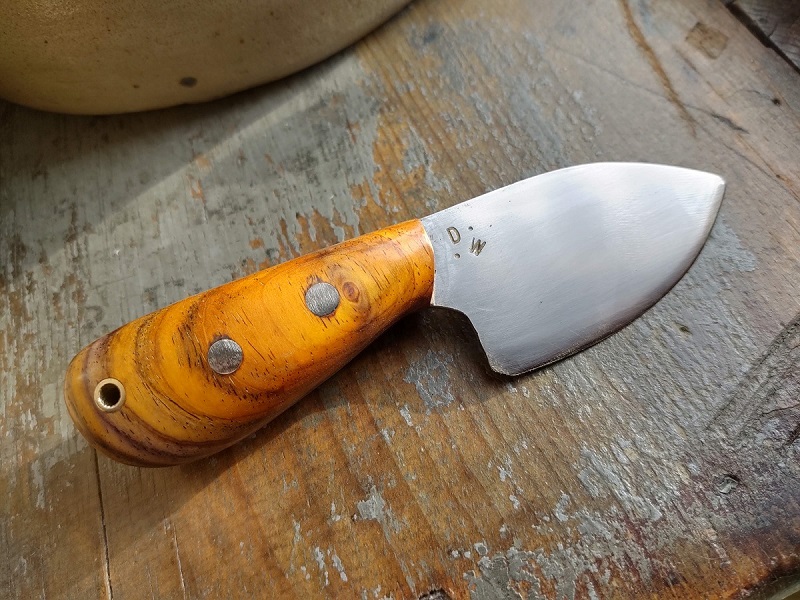Batoning is the technique of cutting or splitting wood by using a baton-sized stick or mallet to repeatedly strike the spine of a sturdy knife, chisel or blade in order to drive it through wood, similar to how a froe is used.
Blade the flat part of the knife with a cutting edge.
Bolster a band of metal between the blade and handle used to support (or “bolster”) the transition between blade and handle
Butt the bottom or rear end of the knife
Choil the indented front of the edge at the start of the blade.
EDC or “Every Day Carry
Full tang a full tang can be seen around all three sides of a knife, top. Bottom and end. Usually with a scale on both sides.
Fuller the rounded or beveled groove or slot milled into the flat side of a blade. Maybe referred to as a “blood grooves”. Typically fullers are for decorative purposes, or they can be used to lighten or balance a knife.
Handle the part of the knife you hold onto
Hilt the handle of a weapon or tool, especially a sword, dagger, or knife.
Hidden tang (or partial tang) is hidden inside the handle and can not be seen on the handle.
Jimping the small notches or file work cut into the back of a blade or put on the choil or other portions of the knife. jimping is used to prevent your fingers from sliding when using the knife.
Pommel a rounded knob on the butt end of the handle of a knife.
Plunge line is the line where the grind begins. It can be transitioned into the blade in a gentle, curved fashion, or it can be ground flat, thus creating a straight or 90° transition.
Quilon the protrusions that stop your fingers from sliding forward onto the blade. It’s the cross guard and typically extends beyond the handle.
Rat-tail Tang or Stick Tang is signifticantly narrower than the blade, thus giving it the resemblance of a rat. (The blade is the thick body of the rat while the tang looks like the thin tail.) The tang is often secured to the handle with a bolt or threaded pommel.
Ricasso the unsharpened length of blade just above the guard or handle on a knife
Scale two pieces of material that you use for the handle when making a knife.
Spline the top or unsharpened edge of a knife
Sheath a case for carrying the knife, typically leather
Saya a wooden sheath
Swedge An unsharpened bevel grind along a portion of the spine of a blade.
Tang the portion of the knife that extends down into the handle
________________
As an Amazon associate, we earn income from qualifying purchases when you click on a link. Your link clicks help us fund our website.________________


[…] first I though “This knife could probably use a little more bevel. Maybe it needs a ricasso and probably a choil” but after doing this for a while i realized some knife designs have […]
[…] is a great mid level design for a newer knife maker. It adds a few components like a racasso and a choil. Being a sheeps foot design it simplifies grinding a bit since you do not have the curve in the […]